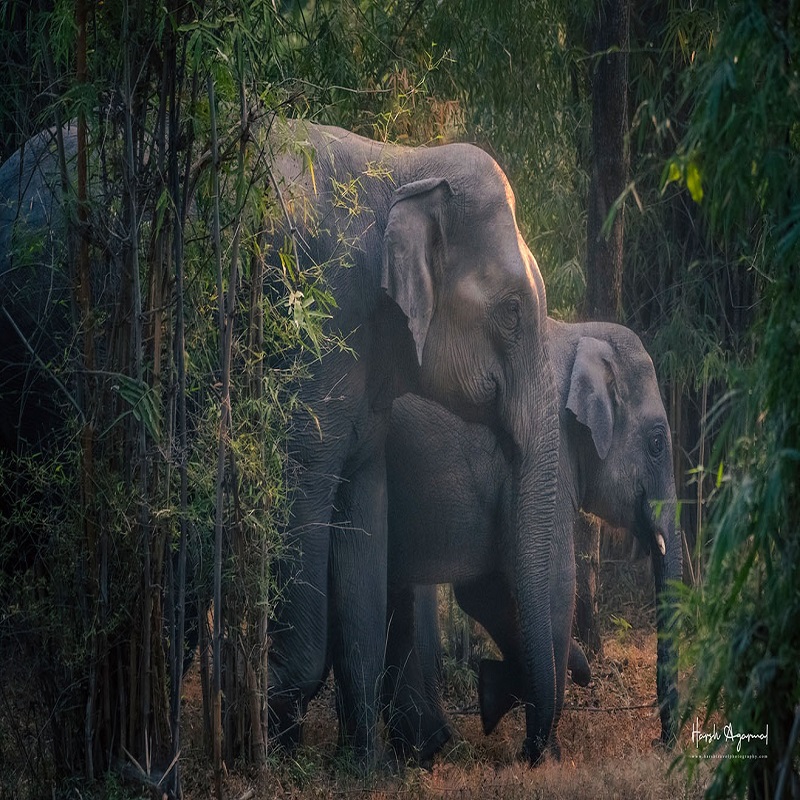Few experiences in life match the thrill of seeing a tiger in the wild — muscles rippling, eyes glinting with quiet power, moving through the forest like a living legend. For travelers, photographers, and nature lovers alike, embarking on the best tiger safari in India is a journey into the raw, untamed essence of the subcontinent.
An India safari tour isn’t just about ticking off animals from a list; it’s about immersion — breathing in the forest air, listening to distant alarm calls, and feeling the heartbeat of India’s wilderness.
Why India Leads the World in Tiger Safaris
India’s success in tiger conservation is nothing short of remarkable. Once on the brink of extinction, the country’s tiger population has made a powerful comeback thanks to Project Tiger, launched in 1973.
As of the 2022 All India Tiger Estimation Report, the nation is home to over 3,167 tigers — roughly 75% of the global wild tiger population. These big cats roam across more than 50 reserves spread throughout India, each offering a unique landscape, ecosystem, and adventure.
This makes India not just the best place to see tigers, but also one of the most rewarding destinations in the world for wildlife enthusiasts.
Where to Find the Best Tiger Safari in India
While every reserve has its charm, a few parks stand out for their combination of tiger density, accessibility, scenic beauty, and visitor experience.
- Bandhavgarh National Park (Madhya Pradesh)
Once the hunting grounds of Maharajas, Bandhavgarh is now one of India’s best-managed tiger reserves. It’s known for offering some of the most frequent tiger sightings in the country.
Why it’s special:
- Among the highest tiger densities in India
- Photogenic landscapes with cliffs, grasslands, and forest trails
- Rich birdlife and scenic drives
Best time to visit: February to May
Pro tip: Book multiple safaris across the Tala and Magadhi zones for the best sighting opportunities.
- Kanha Tiger Reserve (Madhya Pradesh)
The lush sal forests and open meadows of Kanha inspired Rudyard Kipling’s The Jungle Book. This reserve is not only home to tigers but also to barasingha (swamp deer), wild dogs, leopards, and hundreds of bird species.
Why it’s special:
- Beautiful landscapes and rich biodiversity
- Excellent eco-lodges and safari management
- Balanced mix of wildlife viewing and photography
Best time to visit: November to June
Pro tip: Stay for at least three nights — Kanha’s beauty deserves time to unfold slowly.
- Ranthambhore National Park (Rajasthan)
For many travelers, Ranthambhore defines the quintessential tiger safari. Set against the ruins of a 10th-century fort, the park’s dry forests and open terrain make it easier to spot tigers during the day.
Why it’s special:
- Tigers often roam near lakes and historical ruins
- Easily accessible from Jaipur and Delhi
- Perfect combination of heritage and wildlife
Best time to visit: October to June
Pro tip: Combine Ranthambhore with a cultural Golden Triangle route — Delhi, Agra, and Jaipur — for a complete India safari tour experience.
- Tadoba-Andhari Tiger Reserve (Maharashtra)
Often called a “photographer’s paradise,” Tadoba is known for consistent sightings and fewer tourists. Its bamboo forests and serene lakes make it an ideal choice for those seeking intimacy with the wild.
Why it’s special:
- High success rate for tiger sightings
- Well-regulated, crowd-free zones
- Great value for serious photographers
Best time to visit: March to May
Pro tip: Morning safaris around Telia Lake are prime spots for tiger reflections and golden light shots.
- Jim Corbett National Park (Uttarakhand)
As India’s oldest national park, Corbett is where tiger conservation began. Nestled in the Himalayan foothills, it’s home not only to tigers but also to elephants, leopards, and a stunning diversity of birds.
Why it’s special:
- Dense forests and rivers create atmospheric backdrops
- Safari stays inside the Dhikala zone
- Exceptional biodiversity
Best time to visit: November to April
Pro tip: Even if tiger sightings are rare, Corbett’s landscapes make for breathtaking photography.
Building Your Perfect India Safari Tour
An India safari tour can be customized to include multiple tiger reserves or a mix of habitats — from central India’s forests to the wetlands of Assam or the deserts of Rajasthan.
A classic 10- to 14-day itinerary might look like this:
- Days 1–2: Arrive in Delhi; explore heritage and street life.
- Days 3–5: Fly to Jabalpur; enjoy safaris in Bandhavgarh.
- Days 6–8: Transfer to Kanha; experience jungle drives and village walks.
- Days 9–11: Optional extension to Tadoba or Pench.
- Days 12–14: Return via Nagpur or Delhi for your journey home.
For travelers seeking variety, combining wildlife with cultural highlights — like Jaipur’s palaces or Varanasi’s ghats — adds richness to your India safari tour.
Tips for an Unforgettable Tiger Safari
- Be patient: You’re visiting the tiger’s home, not a zoo. Sometimes the best memories come from waiting and watching the forest come alive.
- Use the right gear: A zoom lens (100–400mm or more) is ideal; avoid flash.
- Book early: Safari permits in popular zones sell out months in advance.
- Travel with experts: Naturalist-led safaris increase your chances of meaningful sightings.
- Respect nature: Maintain silence, avoid littering, and follow park rules strictly.
Best Season for Tiger Sightings
- February to May: Dry season — fewer water sources mean better tiger visibility.
- November to January: Lush landscapes, cooler temperatures, and misty mornings — perfect for photography.
- Avoid: July to September, when most parks close for monsoon and breeding.
The Power of Responsible Tourism
Every visitor who joins a safari plays a role in tiger conservation. Park fees and eco-lodge revenues fund local jobs, anti-poaching efforts, and education programs.
The best operators balance luxury with sustainability, ensuring your India safari tour benefits both wildlife and communities. When you travel responsibly, your journey becomes part of the tiger’s survival story.
The Final Roar
A tiger safari in India is not just about the thrill of seeing the world’s most powerful cat — it’s about rediscovering your own connection with nature. The stillness before a sighting, the rhythm of the forest, the excitement in your guide’s whisper — it all adds up to something unforgettable.
The best tiger safari in India doesn’t just give you a photo; it gives you perspective — a reminder that in a noisy world, true magic still hides in the quiet of the jungle.

